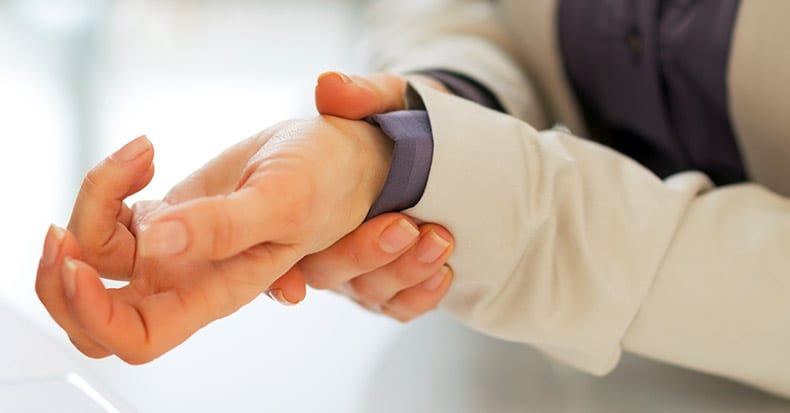So what IS carpal tunnel syndrome (CTS)? According to the National Institute of Neurological Disorders and Stroke (National Institutes of Health), CTS occurs as a result of the median nerve, which is located in the middle of the forearm and hand on the palm side, getting pinched or squeezed at the wrist. This results in numbness or tingling and later, weakness in the part of the hand that is innervated by the median nerve (palm and index, 3rd and half of the 4th finger). The reason this occurs so frequently is primarily due to the way the wrist is designed. There are eight little wrist bones that make up the “tunnel” (“U” shaped-see pictures)

There are nine tendons that travel through the tunnel and the median nerve sits on top of the nine tendons, just under the “roof” of the tunnel (a ligament). When the hands and fingers have to move rapidly such as when typing, playing piano, working on a fast paced, repetitive motion job (eg., packing cookies, meat packaging, etc.), the tendons rub together and create friction. As a result, the tendons swell and the median nerve gets squeezed or pinched between the swollen tendons and the roof (ligament). This process results in the symptoms: numbness, tingling, burning, itching, “half-asleep,” driving numbness, difficulty picking up things with the finger tips, buttoning a shirt, grip/pinch weakness (opening a jar weakness), difficulty in differentiating between hot and cold, and sleep interruptions from the numb/tingling sensations. If not properly treated, the muscles at the base of the thumb can shrink (“atrophy”).
Chiropractors are appropriately trained to diagnose and treat CTS—most importantly, WITHOUT SURGERY! The following represents a logical, effective chiropractic treatment approach for CTS:
- Joint manipulation of the hand, wrist, forearm, and in some cases, the elbow, shoulder, and neck.
- Muscle release techniques. This may include deep tissue active release technique, spray and stretch, mobilization, contract/relax techniques, and teaching you how to perform some of these on your own.
- Exercises such as wall/wrist stretches, isometric and isotonic resistance.
- Cock-up wrist splint use, especially at night.
- Ergonomic modifications (workstation issues)
- Physical therapy modalities such as low level laser therapy.



